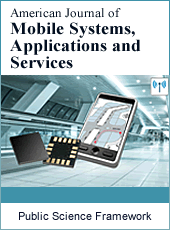American Journal of Mobile Systems, Applications and Services
Articles Information
American Journal of Mobile Systems, Applications and Services, Vol.1, No.2, Oct. 2015, Pub. Date: Jul. 31, 2015
Bridging the Disability Digital Divide: An Empirical Study on Sri Lanka
Pages: 94-101 Views: 4921 Downloads: 1515
[01]
N. Wedasinghe, IT Department, Faculty of Computing, General Sir John Kotelawala Defence University, Rathmalana, Sri Lanka.
[02]
N. Sirisoma, Management and Finance Department, Faculty of Management, General Sir John Kotelawala Defence University, Rathmalana, Sri Lanka.
[03]
A. P. R. Wickramarachchi, Department of Industrial Management, Faculty of Science, University of Kalaniya, Kalaniya, Sri Lanka.
Specifically those who are working with different impairments are not having equal opportunities in accessing Information technology and Internet access compare to the non-disabled working population in Sri Lanka. Objective of this study is to propose an educational training model to bridge the disability digital divide in Sri Lanka. Therefore this community can be effectively contribute to the national development and improve the quality of life of the disabled community.
Disability Digital Divide, Technology Adoption, Educational Model
[01]
Charlton J. (1998) Nothing about us without us: disability, oppression and empowerment. Berkeley, University of California Press
[02]
Driedger D. (1989) The last civil rights movement. London, Hurst
[03]
Barnes C.(1991) Disabled people in Britain and discrimination. London, Hurst.
[04]
Internet world statistics,(2013) “The Digital Divide, ICT and the 50x15 Initiative”< http://www.internetworldstats.com/links10.htm>
[05]
Roger G. Noll, Older-Aguilar. D, Rosston G and Richard R. R(Anon), the digital divide: definitions, measurement, and policy issues [online] Http://faculty.chicagobooth.edu/austan.goolsbee/teaching/digdiv.pdf
[06]
Sen A. (2009) The idea of justice. Cambridge, The Belknap Press of Harvard University Press
[07]
Rogers, E.M. (2003). Diffusion of innovations (5th ed.). New York: Free Press
[08]
Burgstahler S ( 2014) Designing Software that is Accessible to Individuals with Disabilities, [online] < http://www.washington.edu/doit/sites/default/files/atoms/files/Designing-Software-Accessible-Individuals-Disabilites.pdf>
[09]
Hussain R, Shah S W A, S Arif, Sikander M. A (2011)” Policy Guidelines to Bridging the Digital Divide for People with Disabilities”
[10]
Balaram, S. (2004) “Universal Design: A new paradigm”.
[11]
Disabled Peoples International (DPI),(2004) ” Draft India Report” ,
[12]
Disabled World News ,(2009), ” Definitions of Disability a word used in daily conversations that holds different meanings for different people” , 2009
[13]
Erb S., Harris-White B. ,(2002) “Outcast from social welfare: Adult disability, incapacity and development in rural south India. Bangalore: Books for Change”
[14]
Gashel J.,(2004) The state of the law on technology and the blind: What it is and what it ought to be < http: // www.nfb.org / bm/bm00/bm0001/bm000105.htm>

ISSN Print: 2471-7282
ISSN Online: 2471-7290
Current Issue:
Vol. 5, Issue 1, March Submit a Manuscript Join Editorial Board Join Reviewer Team
ISSN Online: 2471-7290
Current Issue:
Vol. 5, Issue 1, March Submit a Manuscript Join Editorial Board Join Reviewer Team
| About This Journal |
| All Issues |
| Open Access |
| Indexing |
| Payment Information |
| Author Guidelines |
| Review Process |
| Publication Ethics |
| Editorial Board |
| Peer Reviewers |


